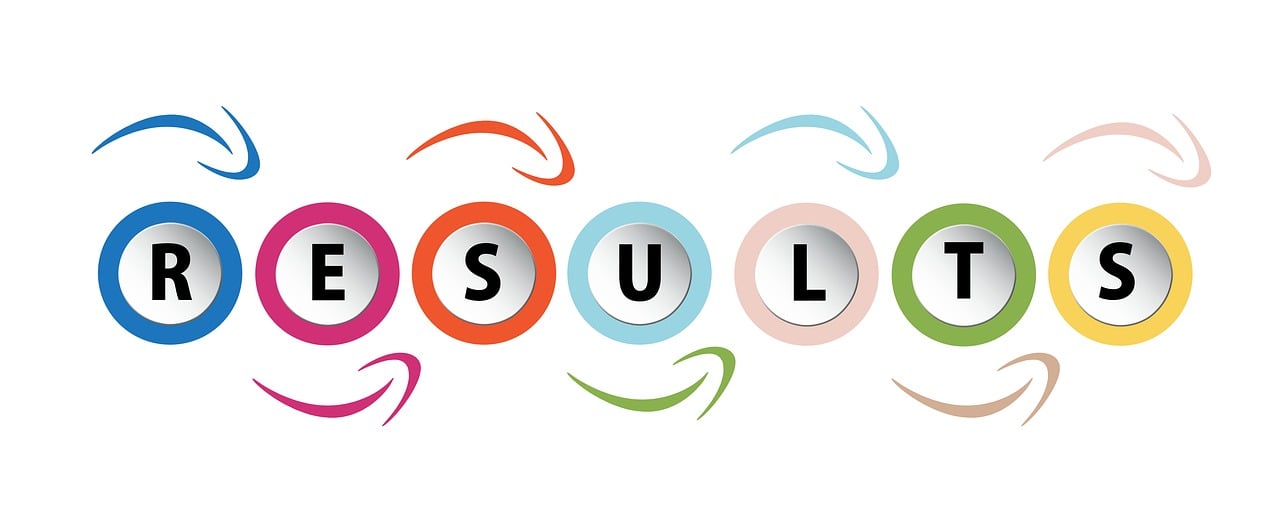Table of Contents
When the scorching summer heat sets in, few things are as crucial as a properly functioning air conditioning system. However, even the most reliable AC units can occasionally fail, leaving you sweltering in discomfort. Being prepared for such emergencies can make a significant difference in your comfort and safety. In this article, we’ll explore what to do when your AC system fails, providing you with a roadmap to keep cool during these unexpected situations.
When the scorching summer heat sets in, few things are as crucial as a properly functioning air conditioning system. However, even the most reliable AC units can occasionally fail, leaving you sweltering in discomfort. Being prepared for such emergencies can make a significant difference in your comfort and safety. In this article, we’ll explore what to do when your AC system fails, providing you with a roadmap to keep cool during these unexpected situations.
1. Prioritize Health and Safety
The health implications of a malfunctioning AC system during extreme heat cannot be overstated. High temperatures can lead to heat-related illnesses such as heat exhaustion or heatstroke, which can be life-threatening. It’s not just about comfort; it’s about protecting your health and the well-being of your family. Therefore, swift action is crucial.
2. Gather Essential Supplies
As part of your AC emergency preparedness, it’s a good idea to have a designated “cooling kit” on hand. This kit may include:
- Portable fans: Battery-operated or solar-powered fans can provide some relief.
- Ice packs or gel packs: These can help cool your body temperature.
- Thermometer: To monitor indoor temperatures.
- Rechargeable power bank: To keep your devices, like phones and fans, operational.
- Cooling towels: These can be soaked in cold water and draped around your neck to lower body temperature.
3. Know the Signs of AC Failure
Understanding the signs of AC failure can help you take proactive steps. These signs may include:
- Unusual sounds: Strange noises, such as banging or hissing, can indicate problems.
- Reduced airflow: If the air from your vents feels weak, there may be an issue.
- Warm air: If your AC is blowing warm air instead of cold, it’s a clear problem.
- Frequent cycling: Rapid on-and-off cycling can indicate a malfunction.
- Leaks or moisture: Water pooling around the unit or unusual moisture can signal trouble.
4. Regular Maintenance Matters
To prevent AC failures in the first place, invest in regular maintenance. Schedule professional check-ups before the summer season begins to ensure that your system is in good working order. Clean or replace air filters regularly to maintain efficiency and prevent clogs that can lead to breakdowns.
5. Consider Backup Cooling Solutions
In addition to temporary solutions like fans and cooling towels, you might want to explore the possibility of backup cooling systems. Backup generators can ensure that your AC continues to run during power outages. Portable air conditioners can provide localized cooling to essential areas of your home while your main system is being repaired.
6. Stay Informed
Keep an eye on weather forecasts, especially during heatwaves. Being aware of upcoming extreme heat events can help you plan ahead and take precautionary measures, such as adjusting your thermostat settings to cool your home before the peak heat hours.
In conclusion, an AC failure during a heatwave is a challenging situation, but being prepared and knowing how to respond can make all the difference. Prioritize your health and safety, gather essential supplies and consider regular maintenance and backup solutions. By taking these steps, you’ll be better equipped to handle AC emergencies and ensure your comfort and well-being during the hottest months of the year.
You can also read more about this here: Healthcare Facilities and Power Outages | FEMA
Stay Calm and Assess the Situation
The first step when you realize your AC system has failed is to stay calm. Panic won’t fix the issue, but a composed approach will. Start by assessing the situation. Is the AC completely non-responsive or is it blowing warm air? Different problems may require different solutions, so understanding the issue is vital.
Facing a malfunctioning AC system can be a frustrating experience, especially during sweltering summer days, but it’s important to remember that staying calm is the first and most crucial step in resolving the issue. Reacting with panic won’t magically repair your AC, but a composed and methodical approach can help you get to the bottom of the problem and take appropriate action.
**1. ** Assess the Situation: Take a moment to evaluate the AC’s behavior. Is it completely non-responsive or is it blowing warm air? Does it make unusual sounds? Understanding the nature of the problem is essential because different issues may require different solutions. For example, if the AC isn’t turning on at all, it could be an electrical problem, while warm air might indicate a refrigerant issue.
2. Check the Basics: Before calling for professional help, verify some basic elements. Ensure that the thermostat settings are correct and that the circuit breaker for the AC unit hasn’t tripped. Sometimes, minor issues like these can mimic major problems and addressing them can save you time and money.
3. Filter and Airflow Inspection: A dirty or clogged air filter can impede airflow and cause cooling problems. Inspect the filter and replace it if necessary. Additionally, make sure there are no obstructions around the AC unit, such as leaves or debris, which can affect its performance.
4. Contact a Professional: If you can’t identify or resolve the issue on your own, it’s wise to contact a professional HVAC technician. They have the expertise and tools to diagnose and repair more complex problems safely. Attempting DIY fixes beyond basic maintenance might exacerbate the issue or void your warranty.
5. Preventive Maintenance: Once the AC is back up and running, consider scheduling regular preventive maintenance. This proactive approach can help identify and address potential issues before they escalate, ensuring your system runs efficiently and reliably.
Remember, maintaining a cool head when your AC fails is the key to a swift and effective solution. While the initial inconvenience is frustrating, a systematic and calm approach will help you navigate the situation and restore comfort to your home efficiently.
Don’t stop here; you can continue your exploration by following this link for more details: Emergency Preparedness and Response: Getting Started …
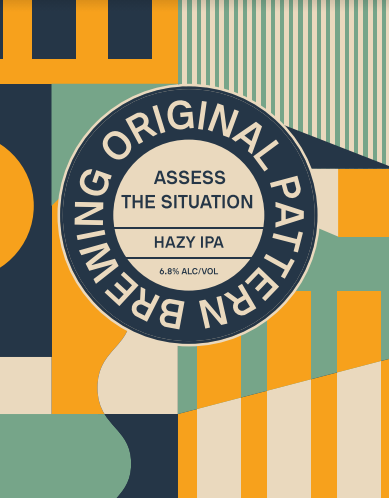
Check for Basic Issues
Before calling for professional help, it’s essential to rule out any simple problems that you can address yourself. Make sure the thermostat is set to “cool” and at the desired temperature. Check that the circuit breaker hasn’t tripped and that the air filter is clean. Sometimes, these issues can be easily resolved, restoring your AC’s functionality.
Taking a proactive approach to troubleshooting your air conditioning system can save you time, money and the inconvenience of a sweltering home on a hot day. Before reaching out to a professional technician, consider these additional steps to diagnose and potentially resolve common AC issues:
Inspect Air Vents: Ensure that all air vents throughout your home are open and unobstructed. Blocked vents can impede proper airflow, causing uneven cooling or reduced efficiency. Adjust furniture or objects that might be inadvertently blocking vents.
Clean Condenser Unit: If you have an outdoor condenser unit, inspect it for debris such as leaves, dirt or grass clippings. A clogged condenser can hinder heat exchange and cooling efficiency. Gently clean the unit and clear any obstructions.
Examine Ductwork: Inspect your ductwork for visible damage, gaps or disconnected segments. Leaky or poorly insulated ducts can lead to air loss, reducing your system’s efficiency. Seal gaps with duct tape or consider professional duct sealing.
Check Thermostat Batteries: If your thermostat operates on batteries, low or dead batteries can disrupt communication with your AC system. Replace the batteries and ensure the thermostat display is functioning correctly.
Assess Refrigerant Lines: Examine the refrigerant lines running from your indoor to outdoor units. Look for signs of wear, damage or refrigerant leaks, such as oily spots or hissing sounds. Refrigerant leaks should be addressed by a professional technician.
Inspect Electrical Connections: Ensure that all electrical connections, including wiring and terminals, are secure and free from damage. Loose or corroded connections can lead to electrical problems that affect AC performance.
Reset the AC: Sometimes, a simple reset can resolve minor glitches. Turn off the power to your AC system for a few minutes, either at the thermostat or the circuit breaker. Then, turn it back on and monitor its performance.
Listen for Unusual Noises: Pay attention to any unusual noises coming from your AC unit, such as grinding, rattling or screeching. Unusual noises can indicate mechanical issues that require professional attention.
Monitor for Ice Buildup: If you notice ice forming on the evaporator coils or refrigerant lines, it could be a sign of restricted airflow or refrigerant problems. Turn off the AC to allow the ice to thaw before restarting it.
Regular Maintenance: Consider scheduling regular professional maintenance for your AC system. Professional technicians can detect and address issues before they become major problems, ensuring optimal performance and extending the lifespan of your unit.
By following these additional troubleshooting steps and conducting regular maintenance, you can help keep your air conditioning system running smoothly. However, if you still encounter issues or suspect more complex problems, don’t hesitate to contact a qualified HVAC technician for a thorough inspection and professional repairs. It’s essential to prioritize your comfort and the efficiency of your cooling system, especially during the hottest months of the year.
If you’d like to dive deeper into this subject, there’s more to discover on this page: Frequently Asked Questions (FAQ) About Extreme Heat | Natural …
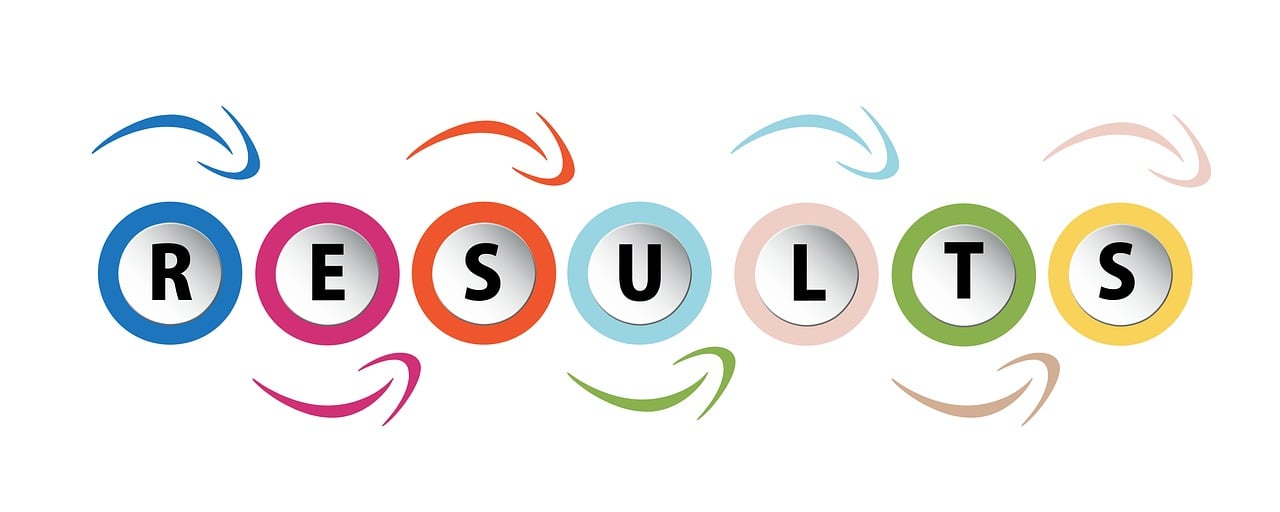
Ventilation and Fans
While your AC is down, maximize the use of fans and ventilation to circulate air in your home. Ceiling fans, floor fans or box fans can help distribute air and create a cooling effect, making your indoor environment more bearable.
During those unfortunate times when your AC is out of commission, there are several effective strategies to keep your indoor environment comfortable and cool. Harnessing the power of fans and ventilation becomes essential in such situations:
Ceiling Fans for Air Circulation: If you have ceiling fans in your home, utilize them to their fullest potential. Ceiling fans are designed to distribute air evenly throughout a room, creating a gentle breeze that enhances comfort. During a AC breakdown, set your ceiling fans to rotate counterclockwise in the summer to create a cooling effect. Remember that ceiling fans cool people, not rooms, so turn them off when you leave a room to save energy.
Portable Floor Fans: Portable floor fans or box fans are versatile tools for maintaining airflow. Place them strategically in rooms where you spend the most time, such as the living room or bedroom. These fans are effective at moving air and providing relief from the heat. You can position them near open windows or doors to draw in cooler outdoor air when the temperature drops in the evening.
Window Fans: Window fans can be a game-changer, especially during the cooler hours of the day or night. Install them in windows that allow for cross-ventilation. By pulling in fresh outdoor air and expelling warm indoor air, you can create a natural cooling flow throughout your home.
Exhaust Fans: In areas prone to heat buildup, such as the kitchen or bathroom, exhaust fans play a crucial role. They remove hot air and humidity, making these spaces more comfortable. Using exhaust fans while cooking or taking hot showers can help reduce indoor temperatures.
Strategic Timing: Be mindful of when you use fans and open windows. In the morning and evening when outdoor temperatures are cooler, take advantage of natural ventilation by opening windows and turning on fans. During the hottest parts of the day, keep windows and blinds closed to prevent warm air from entering.
Minimize Heat Sources: To lessen the burden on your temporary cooling setup, minimize heat-producing activities like cooking on stovetops or using the oven. Opt for no-cook meals, use a microwave or grill outdoors to keep indoor temperatures down.
Stay Hydrated: Staying hydrated is essential during hot spells. Drink plenty of water to help regulate your body temperature and keep cool.
Emergency AC Repair: Consider reaching out to an HVAC professional for emergency AC repair. While it may incur some cost, getting your AC up and running again as quickly as possible can be worth it for your comfort and well-being.
In conclusion, when your AC system faces a hiccup, don’t let the heat overwhelm you. Utilize fans and ventilation strategically to maintain airflow, stay cool and create a more bearable indoor environment. With a well-executed plan and some patience, you can weather the temporary discomfort until your AC is back in action.
Additionally, you can find further information on this topic by visiting this page: Power Outages — What to do?
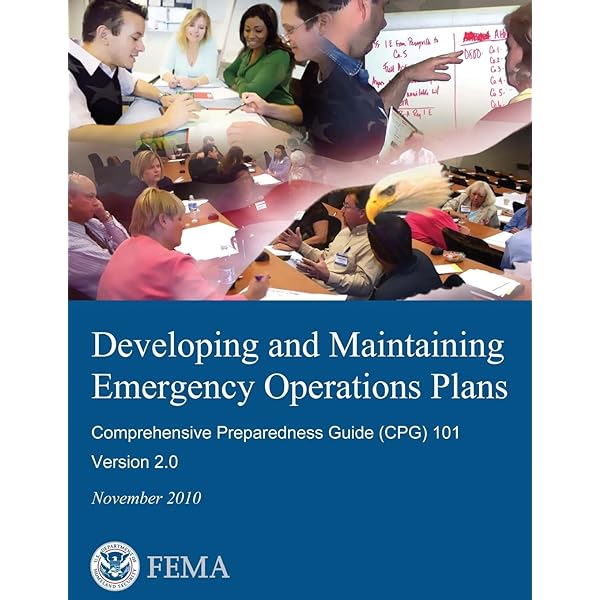
Seal and Insulate
Close curtains or blinds to block out direct sunlight, which can significantly increase indoor temperatures. Additionally, make sure all doors and windows are properly sealed to prevent warm air from entering your home and exacerbating the situation.
Creating a cooler and more comfortable indoor environment during hot weather is not just about relying on air conditioning; it’s also about making mindful adjustments to your home’s design and sealing potential sources of heat ingress. Building upon the idea of closing curtains or blinds and sealing doors and windows, here are some additional strategies to help you beat the heat without cranking up the AC:
Strategic Shading: In addition to closing curtains or blinds, consider investing in reflective window films or shades. These specialized window treatments can significantly reduce solar heat gain while still allowing natural light to filter through. They act as a barrier, reflecting the sun’s heat and preventing it from penetrating your home.
Use Natural Ventilation: In the evenings and early mornings, when outdoor temperatures are cooler, take advantage of natural ventilation. Open windows on opposite sides of your home to create cross-ventilation. This can flush out hot air and bring in cooler, fresher air.
Sealing Gaps and Cracks: Beyond doors and windows, don’t forget to inspect and seal any gaps or cracks in your home’s exterior, walls and roof. Proper insulation and sealing can help maintain a stable indoor temperature and reduce the intrusion of warm outdoor air.
Upgrade Insulation: Investing in better insulation for your home, especially in the attic and walls, can have a profound impact on temperature regulation. High-quality insulation helps keep cool air in and hot air out, making your home more energy-efficient and comfortable.
Use Ceiling Fans: Ceiling fans are excellent for creating a breeze and distributing cool air more effectively. They allow you to set your thermostat a few degrees higher without sacrificing comfort. Remember to adjust the fan’s direction to counterclockwise for summer use.
Cook Wisely: Cooking generates heat, which can raise indoor temperatures. During hot weather, opt for meals that require minimal cooking or use smaller appliances like a microwave or toaster oven. Outdoor grilling is also a great way to avoid heating up your kitchen.
Minimize Appliance Use: Appliances like clothes dryers and dishwashers generate heat when in use. Try to run these appliances during the cooler parts of the day or, better yet, let dishes air dry and use a clothesline for laundry.
Create Shade Outdoors: Planting trees or installing shading structures like pergolas or awnings outside can provide additional shade to cool down your home’s exterior, reducing the heat that penetrates indoors.
By incorporating these strategies alongside closing curtains or blinds and sealing doors and windows, you can significantly reduce your reliance on air conditioning while maintaining a comfortable indoor environment during hot weather. These measures not only help you stay cool but also contribute to energy savings and a more environmentally sustainable home.
If you’d like to dive deeper into this subject, there’s more to discover on this page: How to Prepare an A/C System for the Summer

Stay Hydrated and Cool
During an AC failure, it’s essential to keep yourself and your family members hydrated. Drink plenty of water and consider taking cool showers or baths to lower your body temperature. Wearing lightweight, breathable clothing can also help.
Facing an air conditioning (AC) failure, especially during hot and sweltering weather, can be challenging, but taking proactive steps to stay cool and hydrated can make a significant difference in maintaining your comfort and well-being.
1. Hydration Is Key: Staying well-hydrated is paramount when dealing with a lack of AC. Heat can cause excessive sweating, leading to fluid loss. Ensure you and your family members have access to plenty of water throughout the day. It’s a good practice to keep a supply of bottled water or a water filter pitcher readily available. Encourage regular water intake, even if you don’t feel thirsty, to prevent dehydration.
2. Cool Off with Showers or Baths: One effective way to lower your body temperature during an AC failure is to take cool showers or baths. The contact with cool water can provide immediate relief from the heat. Consider taking these refreshing breaks as needed and you’ll find that they can help you stay more comfortable and cope with the rising temperatures.
3. Opt for Lightweight, Breathable Clothing: What you wear can significantly impact your comfort in a hot environment. Choose lightweight, loose-fitting and breathable clothing made from natural fabrics like cotton. These materials allow better air circulation, which helps your body regulate its temperature more effectively. Avoid dark-colored clothing, as it can absorb and retain heat.
4. Create Cross-Ventilation: If possible, open windows on opposite sides of your home to create cross-ventilation. This allows fresh air to flow through, carrying away indoor heat and bringing in cooler outdoor air. You can enhance this effect by using fans strategically to facilitate air circulation.
5. Block Out Direct Sunlight: Direct sunlight can significantly heat up your living spaces. Use curtains, blinds or shades to block out sunlight during the hottest parts of the day, especially in rooms where you spend the most time. This simple step can noticeably reduce indoor temperatures.
6. Use Fans Wisely: Fans can help create a cooling breeze, but they don’t actually lower the temperature. To maximize their effectiveness, place them near open windows to draw in cooler air or use them alongside your cool showers or baths. Ceiling fans set to rotate counterclockwise can help circulate air more efficiently.
7. Seek Alternative Cooling Spaces: If the heat becomes unbearable, consider spending time in cooler areas, such as air-conditioned public places like shopping malls, libraries or community centers. These locations provide temporary relief and a chance to cool down.
8. Regularly Check on Vulnerable Individuals: Be mindful of family members, especially the elderly, young children or those with health conditions, who may be more susceptible to heat-related illnesses. Regularly check on their well-being and ensure they are following these cooling strategies.
In conclusion, while an AC failure can be inconvenient and uncomfortable, taking these steps to stay cool and hydrated can help you weather the heat more comfortably until your cooling system is back up and running. Remember that safety and well-being should always come first, so be proactive in managing the effects of heat, especially during extreme weather conditions.
To expand your knowledge on this subject, make sure to read on at this location: Extreme Heat | Malden, MA

Seek Professional Help
If you’ve tried the basic troubleshooting steps and your AC system still isn’t working, it’s time to call a professional HVAC technician. Be sure to choose a reputable service provider with emergency response capabilities. Explain the situation clearly to them and request immediate assistance, especially if you have vulnerable family members, such as the elderly or infants, at home.
When you find yourself in the unfortunate situation where your AC system remains stubbornly unresponsive after attempting basic troubleshooting, reaching out to a professional HVAC technician is the prudent course of action. These skilled experts possess the knowledge and experience necessary to diagnose and rectify complex issues efficiently. Here’s how to proceed when it’s time to call in the professionals:
Research and Choose Wisely: Start by researching reputable HVAC service providers in your area. Look for companies with a strong track record, positive customer reviews and the necessary licenses and certifications. A trusted service provider ensures that your AC woes are addressed effectively and fairly.
Emergency Response: Opt for a service provider with emergency response capabilities. AC breakdowns can happen at any time, often during the most inconvenient moments. A company that offers 24/7 emergency service ensures that you won’t have to endure sweltering heat or discomfort for long periods.
Clear Communication: When you contact the HVAC technician, explain the situation as clearly and comprehensively as possible. Provide details about the symptoms you’ve observed, any unusual noises or any recent changes in your AC system’s performance. This information helps the technician pinpoint potential issues more quickly.
Prioritize Vulnerable Family Members: If you have vulnerable family members at home, such as the elderly, infants or individuals with health conditions that are sensitive to temperature, prioritize their well-being. Inform the HVAC technician about these circumstances and request immediate assistance if necessary. Many reputable companies understand the urgency of such situations and will do their best to expedite the service call.
Ask Questions: Don’t hesitate to ask questions during the service call. A professional HVAC technician should be willing to explain the issue, the proposed solution and any associated costs clearly. Understanding the repair process helps you make informed decisions.
Maintenance Plans: Consider discussing maintenance plans with the technician once the immediate issue is resolved. Regular maintenance can help prevent future breakdowns and keep your AC system running efficiently.
Remember that attempting DIY fixes or relying on inexperienced technicians can sometimes worsen the problem or lead to additional costs. It’s often more cost-effective and safer in the long run to invest in the services of a qualified HVAC professional.
By following these steps and partnering with a reputable HVAC service provider, you can ensure that your AC system is in capable hands. Their expertise will not only restore your indoor comfort but also provide peace of mind, knowing that your family’s well-being is a top priority.
Looking for more insights? You’ll find them right here in our extended coverage: Healthcare Facilities and Power Outages | FEMA
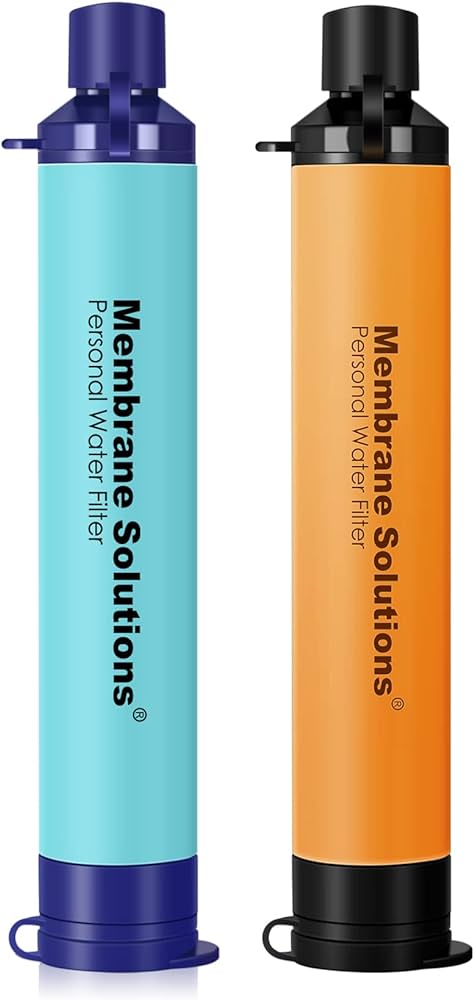
Temporary Cooling Solutions
While waiting for the technician to arrive, you can consider temporary cooling solutions like portable air conditioners or evaporative coolers. These devices can provide relief in specific areas of your home until the main AC issue is resolved.
When you find yourself in the uncomfortable situation of waiting for an HVAC technician to address your AC issue, you don’t have to suffer through the heat. There are several temporary cooling solutions at your disposal to keep your home comfortable and bearable:
Portable Air Conditioners: Portable AC units are versatile and easy to set up. They require an electrical outlet and a window for venting hot air. These units can efficiently cool individual rooms or small living spaces while you await repairs. Consider placing them in areas where you spend the most time, such as the living room or bedroom, to maintain comfort.
Evaporative Coolers: Evaporative coolers, also known as swamp coolers, are excellent options in dry climates. They work by drawing warm air through water-saturated pads, cooling it through evaporation and then blowing the cooled air into the room. While they are not as effective in high humidity areas, they can provide significant relief in arid regions, offering a budget-friendly and eco-friendly cooling solution.
Fans: Electric fans are a simple and accessible way to improve indoor comfort temporarily. Ceiling fans, floor fans or box fans can help distribute air and create a cooling sensation. While fans don’t lower the actual temperature, they make you feel cooler through increased air circulation.
Window Coverings: Keeping direct sunlight out of your home can help prevent it from overheating. Close curtains, blinds or shades during the hottest parts of the day to block out the sun’s rays. This simple step can make a noticeable difference in indoor temperatures.
Seal and Insulate: Check for drafts and seal gaps around doors and windows. Proper insulation helps prevent warm outdoor air from infiltrating your home and keeps conditioned air from escaping. This can significantly improve the effectiveness of temporary cooling solutions.
Stay Hydrated: Staying cool also involves staying hydrated. Drink plenty of water to help regulate your body temperature and reduce discomfort caused by heat.
Avoid Heat-Generating Activities: Minimize activities that generate heat, such as cooking on stovetops or using heat-producing appliances. Opt for cooler meal options or use a microwave, slow cooker or outdoor grill instead.
Cool Towels and Ice Packs: Applying a cold, damp towel to your forehead or wrists can provide instant relief. You can also use ice packs or frozen water bottles to cool down specific areas of your body.
Create Cross-Ventilation: If it’s safe to do so, open windows on opposite sides of your home to create cross-ventilation. This can help flush out hot air and bring in cooler outside air.
While these temporary cooling solutions can help alleviate discomfort while you wait for professional AC repairs, it’s essential to prioritize the safety and well-being of your home and family. Once the technician arrives and addresses the AC issue, you can return to the comfort of your fully functioning cooling system, making the temporary solutions a distant memory.
For additional details, consider exploring the related content available here Healthcare Facilities and Power Outages | FEMA
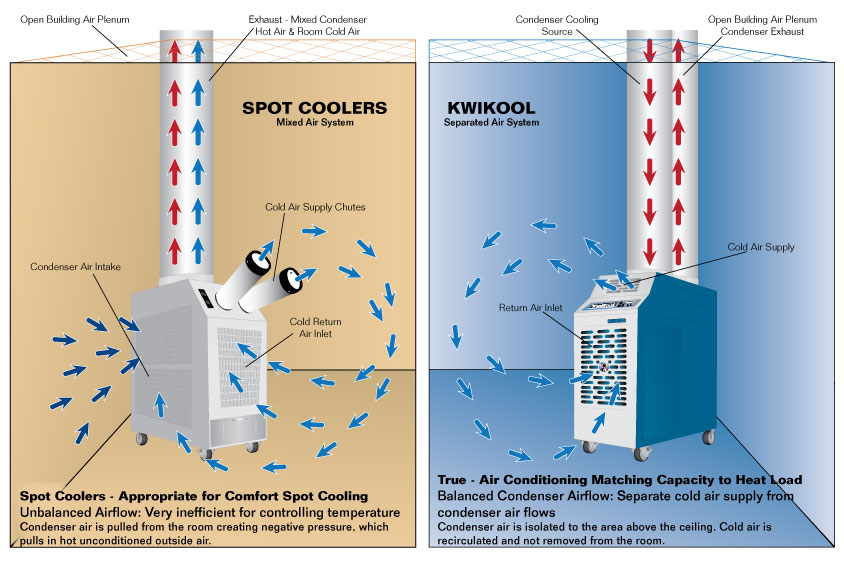
Plan for Future Emergencies
After your AC is repaired, take the time to plan for future emergencies. Regular maintenance can prevent many common AC problems. Consider investing in a backup generator to power essential appliances, including your AC, during power outages.
Once your AC is up and running smoothly after a repair, it’s a prudent move to proactively prepare for potential future emergencies. Being proactive can save you time, money and discomfort in the long run. Here are some valuable steps to consider:
Scheduled Maintenance: Establish a regular maintenance schedule for your AC system. Routine check-ups and servicing by a qualified HVAC technician can identify and address issues before they escalate into major problems. Regular maintenance not only ensures optimal performance but also prolongs the lifespan of your AC unit.
Air Filter Replacement: Make it a habit to replace or clean your AC’s air filters as recommended by the manufacturer. Clogged filters can restrict airflow, reduce efficiency and strain the system, potentially leading to breakdowns. Keeping filters clean or replacing them regularly is a simple yet effective way to prevent common AC problems.
Thermostat Programming: Utilize programmable or smart thermostats to regulate your AC’s operation. Set temperature schedules that align with your daily routine, reducing unnecessary strain on the system. This can lead to energy savings and lower wear and tear.
Seal Air Leaks: Ensure that your home is properly sealed to prevent conditioned air from escaping and outdoor air from infiltrating. This reduces the workload on your AC system and contributes to overall energy efficiency. Seal gaps, cracks and insulate areas where air leaks are common.
Emergency Preparedness: Consider investing in a backup generator to provide power during electrical outages. A generator can keep essential appliances running, including your AC, refrigerator and lighting. This is particularly important in regions prone to severe weather events or frequent power disruptions.
Surge Protection: Protect your AC system from electrical surges by installing surge protectors. Sudden voltage spikes can damage the compressor and other sensitive components. Surge protectors can safeguard your investment and prevent costly repairs.
Clear Outdoor Unit: Regularly inspect the outdoor unit of your AC system. Ensure that it is free from debris, vegetation and obstructions. Adequate airflow around the unit is essential for efficient operation. Keep the area clean and clear to prevent overheating.
User Education: Familiarize yourself and your household members with your AC system’s operation and basic troubleshooting steps. Knowing how to reset the system, change the thermostat settings and identify common error codes can be invaluable in case of minor issues.
Emergency Contacts: Keep a list of reliable HVAC contractors and electricians who can respond quickly to AC emergencies. Having trusted professionals on hand ensures prompt assistance when needed.
Budgeting for Repairs: Allocate a portion of your budget for potential AC repairs. Emergencies can happen and having financial preparedness can ease the burden of unexpected costs.
By adopting these preventive measures and planning ahead, you can minimize the likelihood of future AC problems and ensure that your home remains comfortable, even in challenging situations. Proactive maintenance and preparedness not only save you money but also provide peace of mind, knowing that you’re ready for whatever comes your way.
Should you desire more in-depth information, it’s available for your perusal on this page: Power Outages — What to do?

Facing an AC failure during a heatwave can be challenging, but with the right approach, you can maintain your comfort and safety. By staying calm, assessing the situation and taking proactive steps, you can effectively deal with AC emergencies. Remember that timely professional assistance is crucial and preparing for future emergencies can save you from the discomfort of extended downtime. Stay cool, stay safe and be prepared.
Facing an AC failure during a blistering heatwave can indeed be a daunting experience, but it’s essential to know that you’re not powerless in such situations. With a strategic approach and a level head, you can ensure your comfort and safety even in the sweltering heat. Here’s a more in-depth look at how to navigate AC emergencies:
1. Stay Calm: The first and most crucial step is to remain composed. A sudden AC failure can be stressful, but panicking won’t help. Take a deep breath and remind yourself that there are steps you can take to address the situation.
2. Assess the Situation: Begin by diagnosing the issue, if possible. Check for any obvious signs of malfunction, such as strange noises, leaks or unusual odors. Ensure that the thermostat settings are correct. Sometimes, a simple adjustment can resolve the problem.
3. Safety First: If you detect any unusual or concerning signs, like burning smells or smoke, prioritize safety. Turn off the AC unit and, if necessary, cut power to it at the circuit breaker to prevent potential hazards.
4. Check for Basic Issues: Before calling for professional help, perform some basic troubleshooting. Ensure that the air filter is clean and not obstructed, as a clogged filter can impede airflow and cause cooling issues. Also, inspect the thermostat batteries, as they may need replacement.
5. Seek Professional Assistance: If you can’t identify or resolve the problem on your own, it’s time to contact a certified HVAC technician. They have the expertise to diagnose and repair complex issues safely and efficiently.
6. Stay Hydrated: While awaiting professional assistance or a resolution to the problem, prioritize your hydration. Drink plenty of water and avoid strenuous activities in the heat to prevent heat-related illnesses.
7. Temporary Cooling: If you have access to fans or portable air conditioning units, use them to provide temporary relief. Close curtains or blinds to block out direct sunlight and avoid using heat-generating appliances during the hottest part of the day.
8. Prepare for Future Emergencies: Use this experience as a lesson in preparedness. Consider investing in a backup generator or explore options for a temporary cooling solution, like a portable AC unit or evaporative cooler. Keep a list of trusted HVAC professionals handy for quick access.
9. Regular Maintenance: To prevent future AC emergencies, schedule regular maintenance for your system. Routine inspections and tune-ups can catch potential issues before they become major problems, ensuring your AC operates smoothly.
10. Stay Informed: Keep an eye on weather forecasts, especially during heatwaves and plan ahead. Consider developing a family emergency plan that includes steps for coping with extreme temperatures.
In conclusion, while AC failures during a heatwave are challenging, a composed and proactive approach can help you navigate the situation effectively. Remember that safety should always be your top priority and professional assistance is essential for complex issues. By staying cool, staying safe and preparing for potential emergencies, you can ensure your comfort and well-being even in the hottest of times.
If you’d like to dive deeper into this subject, there’s more to discover on this page: Error Reporting and Disclosure – Patient Safety and Quality – NCBI …
More links
For additional details, consider exploring the related content available here Healthcare Facilities and Power Outages | FEMA
